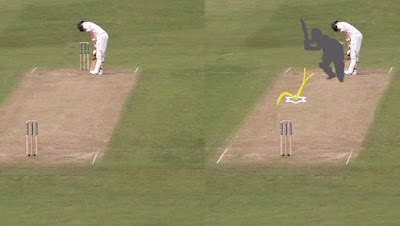Admitting mistakes and accepting mistakes are not same. Practically, an admission means nothing without an acceptance. That's why, most of the criminals remain criminals; most of the politicians remain politicians; most of corporate executives remain corporate executives.
However, such an acceptance is not possible unless one has that (open) mind to understand you can only learn from your mistakes if you realise the mistake and regret it rather shamefully.
Basically, minus that shame, no learning is possible, and without learning, earning is possible, but excellence is impossible.
And greatness lies in excellence, not in earning. Hence, whoever wants to be great, tries to excel, responsibly.
After getting dismissed, cheaply, in both the innings at Trent Bridge, Steven Smith aka Steve Smith felt that shame, as he had bothered to realise his mistakes, as precisely as possible.
For that, he accepted his limitations and was quite open to admit: "I think if you look at the way England play over here, all of their bowlers swing the ball both ways. It makes it a lot harder to bat against when the ball is swinging both ways. I think when you've got the ball swinging both ways you can get drawn into balls that perhaps you wouldn't play at back home or if the ball is swinging just the one way.
"At Trent Bridge I didn't face too many balls, so I wasn't able to get myself in. First innings I got a reasonable ball and looking back I could have left it on length, more than anything. Second innings I just hit a half-volley straight to the man at cover-point there, where they were trying to get me. Pretty disappointing not to have been able to get myself in in the last two Test matches."
His assessment about his own faults and follies was right on the money, as shown in the following four pictures:
In the first innings, he was squared up instead of remaining side-on thus couldn't deal with the delivery that was seaming away from him. And in the second innings, he was drawn into a half-volley away from his body, which he latched onto and played early in front of him, but not below his eyes, thus couldn't keep it down. Plus, the back-heel remained rooted to the ground that didn't help the transfer of weight onto the front-foot.
Then came the Oval test, where he completed his 11th century with all poise, as well as poignancy of losing the urn and the Ashes to England in the previous test only.
Despite the pensive mood, Smith showed the prudence of his class to excel all through his innings before getting out thanks to an inside edge, while he was squared up once again to play a predetermined shot in order the accelerate the run accumulation.
Save for one occasion, while he was on 71 and tried to lift the ball straight up over the bowler's head to dash, Steve's entire innings was flawless and fluent, clearly sending the message across that he learned from his mistakes and therefore wouldn't commit the same mistake again.
He remained side-on, was eager to wait for the ball, and kept playing as late as possible, having the ball right below his eyes.
He was in total command and control on the front-foot and on the back-foot by letting his head remain on top of the ball.
His shuffling was calculative and decisive, while he kept cutting the ball, even exposing all three stumps.
While the English bowlers tried to bowl wide half-volleys outside the off-stump, unlike what he did at Trent Bride, at Oval, Smith kept reaching out for the ball sideways, but noway in front of him, meeting the ball right below his eyes.
That spoke volumes of his cricketing sense which has so far been the basis of his class and excellence.
After all, Steve Smith proved it once again at Oval: "Class is permanent because it's a commitment not to commit the same mistake twice."
------------------------------------------------------------------------------------------------------------
PS: In a condition, where the ball swings both ways and the wickets are conducive to seam bowling, to adjust to that, Smith may practice on a coir-matting wicket and, in a match, may only keep playing for only inswingers and off-cutters, initially, so as to reduce the percentage of an outside edge, considerably.















